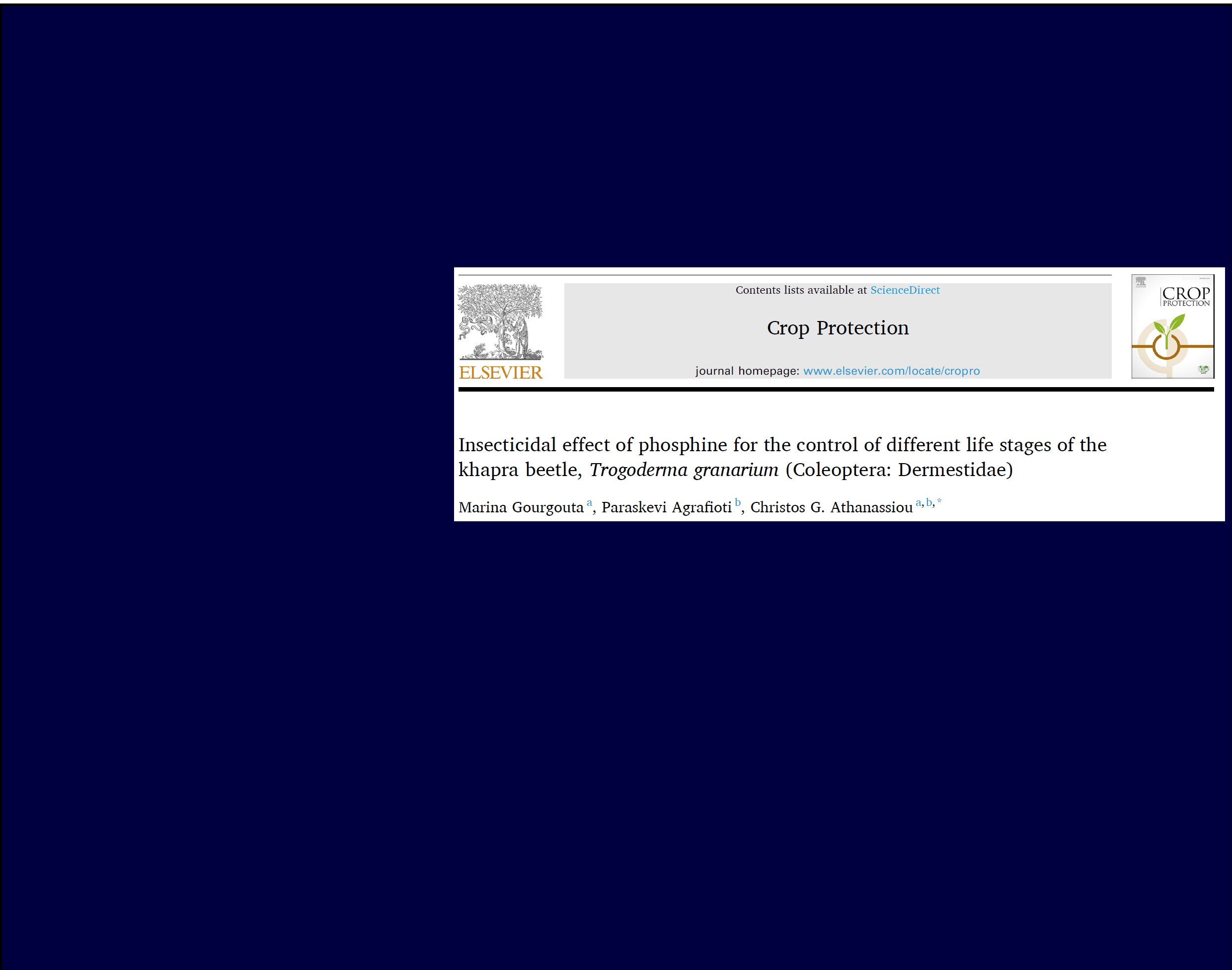ABSTRACT: The khapra beetle, Trogoderma granarium Everts (Coleoptera: Dermestidae), is a serious pest of stored products worldwide, and a quarantine insect for many countries. The use of phosphine gas has been proven to be effective against a wide range of stored-product insect species, but there is still inadequate information in the case of T. granarium. In the present study, we evaluated the effectiveness of phosphine on different life stages of this species, including its diapausing larvae. For this purpose, the protocols that were used were: a) exposure for 20 h at 30 ppm for all life stages including daupausing larvae (standard protocol, proposed by Food and Agriculture Organization, FAO), b) exposure for 3 days in different concentrations, i.e. 50, 100, 200, 300, 500 and 1000 ppm. Both mobile stages (adults and larvae) were immobilized after 20 h of exposure. The most susceptible life stages were adults and pupae, as 100% mortality was recorded for both, 7 days after the termination of the exposure at all concentrations and intervals tested. Larvae, both diapausing and non-diapausing, showed some survival 7 and 14 days after exposure to 30 ppm of phosphine for 20 h. Non-diapausing larvae were more susceptible than diapausing larvae, and shown a delayed response in terms of completing their biology to reach the adult stage. In contrast, diapausing larvae had no delayed response compared to the controls. The life stage with the highest level of tolerance to phosphine appeared to be the eggs, since 100% mortality was recorded only at 1000 ppm after 3 d of exposure. The data of the present study are to be particularly important for the control of this species, especially in the case of quarantine and pre-shipment treatments.
